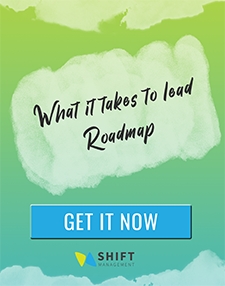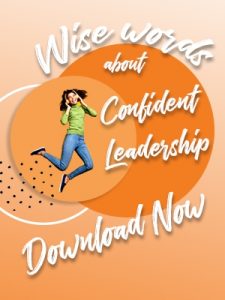Have you ever found yourself watching someone else participate easily in a conversation with a stranger and wondered, “How did he/she do that?” Or perhaps you watched a presenter put forth a series of ideas with brilliant logic, a great sense of humour, or irresistible charm and thought, “I wish I could be like that.”
It might help to know that it is common to feel intimidated by other people’s brilliance, talent or charm and to feel small and unimportant as a consequence. Comparison is something we learn as babies when we figure out the difference between hot and cold, big and small, comforting and frightening. As we grow we figure out that our parents have the power to do things that we are too small and inexperienced to be able to do ourselves as children. Move forward a few more years and we start to measure our abilities and experiences by what we perceive to be “normal” or “desirable” in others.
Although making comparisons is a way to navigate the world, learn how to speak and avoid danger, it is not always helpful in establishing a sense of personal confidence. We are often our own worst critics and hold ourselves to standards we would never expect from others.
The good news is that it is possible to increase your sense of confidence and it is possible to learn to present yourself confidently.
Defining confidence

Let’s start at the beginning: what is confidence exactly? The dictionary defines confidence as being poised and self-assured, self-reliant and comfortable with who we are. It is not being arrogant or putting others down to make yourself look better. Lifehacker Eric Ravenscraft writes that confidence is a key attractiveness magnet for both men and women. Both men and women respond more strongly to a sincere confident smile than to physical attraction in another person. Children who were told others had confidence in their abilities, performed better on tasks and persevered longer with difficulties because they believed they would be successful.
So confidence isn’t about doing things right the first time or never having fears, frustrations or problems to overcome. It is about being willing to take one step forward, and then another until you get to the desired goal.
Confidence is built through taking action. The more you take action, the more you build confidence. It is like learning to walk or swim, play a sport or an instrument or learn any skill. The more you choose to take action and then do it, the better you get. As you get better, your confidence increases.
And that is the first lesson of confidence: deep down you may feel deathly afraid, but taking just one action to move forward towards your desired goal builds confidence. Here is the pattern:
- Feel the fear – When we can recognize our own emotional responses we are in a better place to manage them. Say to yourself, “This is what fear feels like to me,” or “I know that I am in fear right now.” Psychologists use the saying “name it to tame it” to describe how putting a label on an experience actually helps reduce discomfort around that experience.
- Acknowledge your fear – Feelings don’t come about without a reason. If you are in fear, there is a cause for it and it’s best to be aware of why you may have started experiencing that emotion. Why do you feel threatened? What is your worry? What do you feel you can’t control in that moment? Asking yourself these questions and getting curious about your emotion rather than trying to hide or silence it like waving “hello” to your emotion…but we don’t stay there…
- Take a step forward – After you feel and acknowledge your fear, you need to keep going anyway. You’ll find that even one step past that fear will give you power to take the next, and the next.
Maybe you don’t get further than that one step at first, but the very act of taking that step builds the confidence foundation to take the next one.
Know that confidence building strategies are for you?
Watch our webinar recording “Present yourself with confidence”
Practice makes perfect

People usually see me as a confident person. But I was not confident as a child or a youth. I just kept focusing on whatever goal I had and as I learned to overcome obstacles, I increased in confidence. Even though I have developed a repertoire of skills and learned to act with confidence over time, there are still times when I am momentarily paralyzed by fear.
Once I was asked to participate on a series of conference calls with CEOs of big manufacturing companies. The first time I was on the call and I heard the others – all men, all famous – speak, I felt overwhelmed by a sense of inadequacy. Then the moderator asked me a direct question about something that was actually in my field of expertise, but I couldn’t even speak. He asked me the question twice. Silence. Finally he said, “She must have lost the connection momentarily,” which jolted me back to the reality of the situation. My heart was pounding and I couldn’t believe how humiliated I felt.
As soon as I acknowledged my feelings of inadequacy, I made the decision that I was not going to leave the conference call that way. I waited for a moment when I could make a comment, and then addressed the moderator saying I would like to comment on the question he had asked earlier on if it wasn’t too late. As soon as I made that decision not to be defeated by my own emotions, and pushed myself into action, I was able to tap into my sense of authentic self again.
Get started
Since action is the real secret behind confidence, let’s consider some bite-sized steps you can take to make sure you are headed in the right direction on your confidence journey. They fall under four categories, and taking one nibble of each of these areas everyday will transform you into a more confident person.
Category #1: APPEARANCE

While people often say that appearances don’t matter, the truth is that many do judge a book by its cover, and that includes the way we look at ourselves. Choosing to look your best, wearing a clean, comfortable outfit that shows you in your best light is key to feeling confident. Your hair should be neat and trimmed, your teeth brushed and your nails clean.
Sometimes people tell me that they don’t know how to dress in a way that is flattering. Not knowing what to wear or how to find your “look” is an opportunity to get feed back from someone you admire. Tell that person you like their style and are wondering if you could get a few tips on improving your own. People are often very happy to help and you will be amazed at how much more confident you feel with a few small wardrobe changes. So ask yourself, “Who do I know who could give me some style advice?” and then take action by asking for a few tips.
Category #2: DEMEANOUR
Ever heard the saying “fake it ’til you make it?” Demeanour is something we can absolutely control with a bit of practice, so put on a smile, pull back your shoulders and stand tall. Walk into and out of the room the way you think a confident person would walk. Practice mentally expanding the space you take up in the room with your own invisible psychological confidence field. I suggest giving your confidence field a colour so you can “watch” it expand around you as you practice.
New research emphasizes the importance of using physical posture to change your own body chemistry. So, go ahead and try on a few power stances: one is spreading your legs a bit wider when you are standing, another is putting your hands on your hips. Sitting with your arms crossed behind your head is another power move. Any of these small actions can increase your confidence so that when you open your mouth to speak, you are already in the confidence zone.
Category #3: PREPARATION
Almost every obstacle in life can be overcome with preparation. Having trouble presenting yourself? Write three introductions and practice them until you can say them confidently. Worried you won’t be able to contribute to a meeting? Ask for the agenda or discussion themes in advance and prepare some comments for yourself. Fearful about a job interview? Create all the trickiest questions you might be asked and practice answering them in advance. Convinced that when you have to make a workplace presentation you will loose your cool and your voice will crack? Practice your presentation with a friend and learn a few yoga breathing techniques to help calm yourself and feel more comfortable with the upcoming presentation. Prepare, practice, prepare, practice. It really helps increase confidence!
Category #4: OTHER FOCUSED

One of the most effective actions to take for increased confidence is to focus on being interested in the other person and asking questions about them. In an audience situation you can also ask questions from the audience. Focusing on the other person, their interests and needs can help you forget your own lack of confidence. You will be surprised to hear that you are a good listener or that you bring out the best in your audience. Sincere interest in others or in a topic, or a show of passion about one of your interests helps you stop thinking “It is all about me” and gets you started on “What are they like? What do they know? How can I learn from them?” As soon as you make that switch you realize you have just presented your idea with confidence! Who knew?
Jump in
Confidence is about taking action to reach your goals. It’s about feeling and acknowledging your fears, but then going for it anyway. It requires paying attention to your appearance, developing a demeanour of confidence, preparing and focusing on others rather than on yourself.
Ready for the second step? Watch our webinar recording “Present yourself with confidence” where you’ll get more simple and effective ways to:
- Discover your personal competencies and strengths so you can focus on using them consciously
- “Work a room” effectively, using your own personality style and appropriate push and pull statements
- Prepare and practice presentations so you can rest easy
- Deal with nerves that are trying to sabotage you

“Inaction breeds doubt and fear. Action breeds confidence and courage. If you want to conquer fear, do not sit home and think about it…Go out and get busy.”







